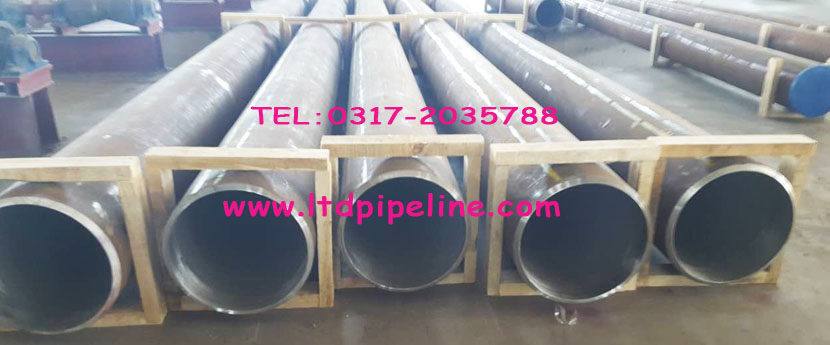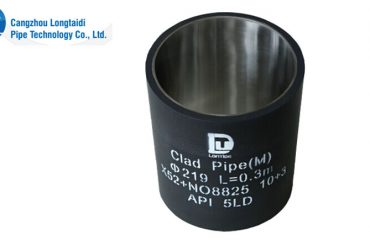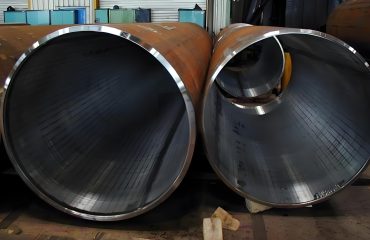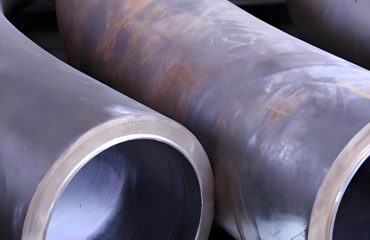
Corrosion resistant alloys (CRAs) are commonly used in the oil & gas industry to protect metal assets in the exploration and production, refineries, and processing plants from corrosion.
A carbon steel pipe clad with CRA provides a highly economical alternative to the use of solid CRA pipe. The high-density infrared (HDIR) cladding process is a high productivity fusion
process that offers a scalable alternative to laser and weld overlay, an easier to inspect and install alternative compared to mechanical cladding, and a seamless weld-free alternative
compared to roll bonding for corrosion- and wear-resistant alloy claddings for manufacturing CRA clad pipes. The HDIR technology uses a high-density infrared thermal source to rapidly melt, fuse, and metallurgically bond metal and composite coatings on steel pipes, plates and bars at very high fusion rates. Current well established processes for producing clad steels have product limitations and/or require large capital investments to modify or expand capacity and offerings. HDIR fusion cladding offers the product flexibility and low capital costs of laser or arc-weld overlay cladding process but offers a higher purity overlay and much higher and scalable production rates. Cladding deposited by HDIR process typically show a higher corrosion resistance, stronger metallurgical bond, lower dilution, and lower porosity compared to conventional cladding technologies.
Cladding refers to a process where a metal,CRA or composite (the cladding material)js bonded electrically, mechanically or through some other high pressure and temperature process onto another dissimilar metat (the substrate) to enhance its durability, strength or appearance. The majority of clad products made today uses carbon steel as the substrate and aluminum, nickel, nickel alloys, copper,copper alloys and stainless steel as the clad materials to be bonded. Typically, the purpose of the clad is to protect the underlying steel substrate from the environment it resides in. Clad pipe is typically produced by cladding a low-cost carbon steel substrate with a corrosionresistant stainless steel or nickel alloy,
which costs a fraction of using a more expensive solid steel alloy for the entire product. For example, a solid nickel alloy pipe would cost about five times more than a carbon steel pipe that is clad with nickel alloy on its inside diameter. The global oil & gas capital expenditure (CapEx) is expected to increase from
$1 ,036 billion in 2012 to $1,201 billion in 2013, registering a growth of 15.9%. The trend of increasing capital expenditure is expected to continue for the foreseeable future, especially driven by reserves that are deeper and farther away from the shore.
Both clad or lined pipes consist of a C-Mn pipe which has a layer of CRA in contact with the production fluid and hence, its corrosive environment. In the case of clad pipes, the layer of CRA is applied using different procedures that create a metallurgical bond, while in the case of lined pipe an internal CRA pipe is connected to the external C-Mn pipe through mechanical bond.
A key use of clad pipes in this industry is for riser pipes. Whereas pipelines are laid horizontally on the sea bed, the term riser covers those pipes that are responsible for transporting
the medium vertically from the sea bed to the surfacefor further processing. Because of the way they are suspended from the ‘fl oating production, storage and offloading’ (FPSO) vessel, and the method of laying them to the extraction point on the sea bed, these pipes are exposed to very large dynamic stresses from the currents and the movement of the ship, both horizontally and vertically. The high internal and external pressure from ocean currents and wave movements, and highly corrosive media, mean that these pipes have to meet the highest quality standards.
1.Material:
1) steel pipe
2) polyurethane insulation
3) high-density polyethylene
2.Usage:
1) urban centralized heat supply
2) warm room
3) coal mine
4) petroleum
5) chemical and other anti-corrosion insulation field
3.Medium teperature: 50-140°c
4.Working pressure: 2.5Mpa
5.Laying method:
1) direct bury
2) built on stilts
3) trench
Clad material combines the corrosive and resistance properties of CRA with the high strength of carbon manganese steels. The result of this combination of CRA material in thinner wall thickness with the strength of heavy wall thickness carbon steel material is a cost efficiency.




You must be logged in to post a comment.